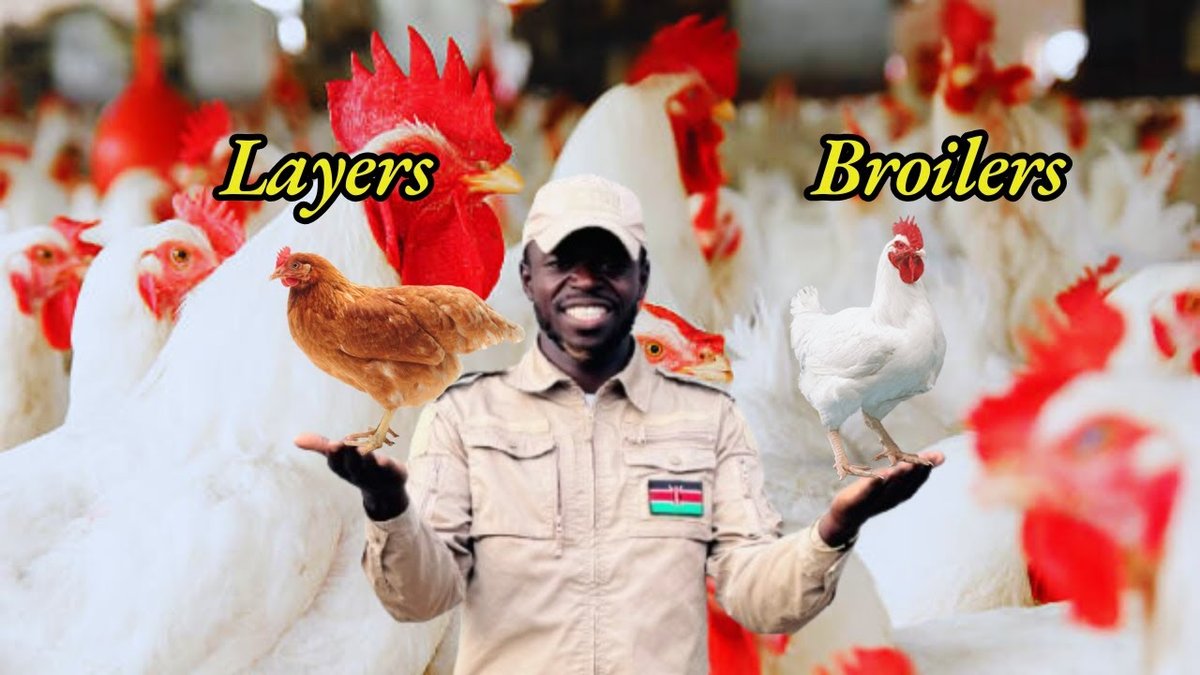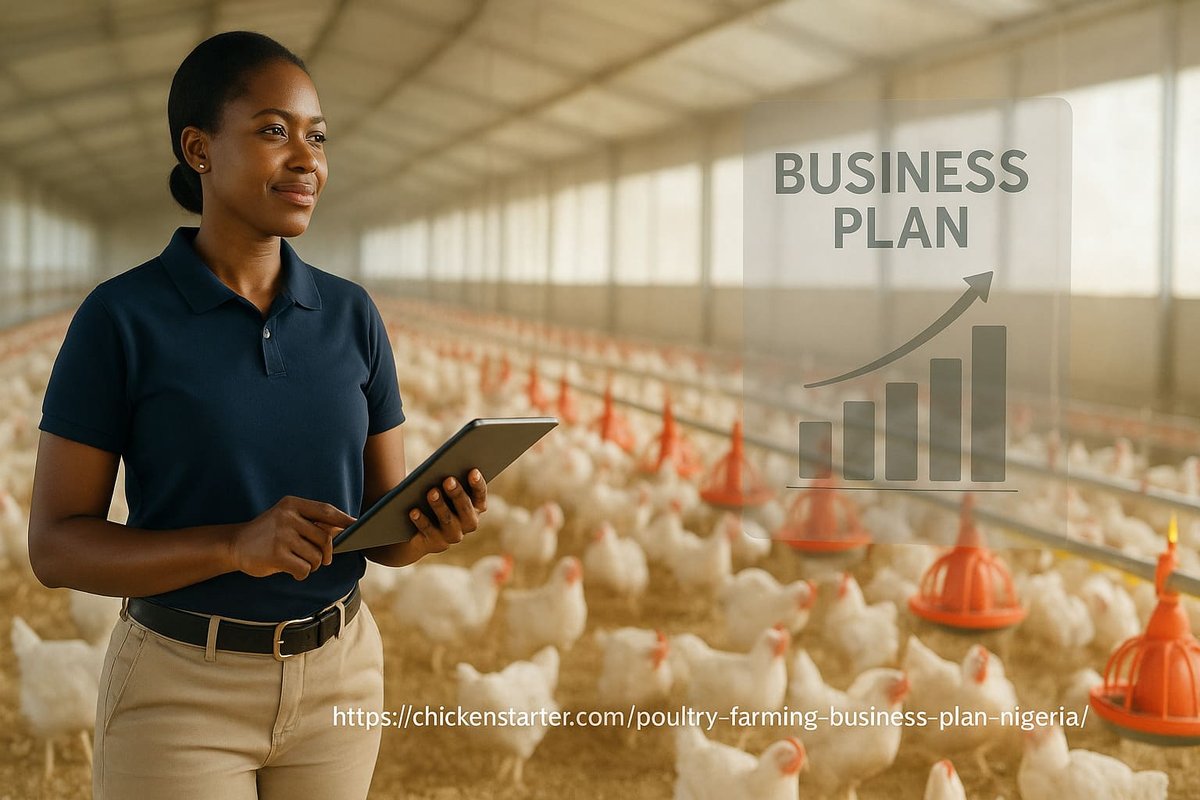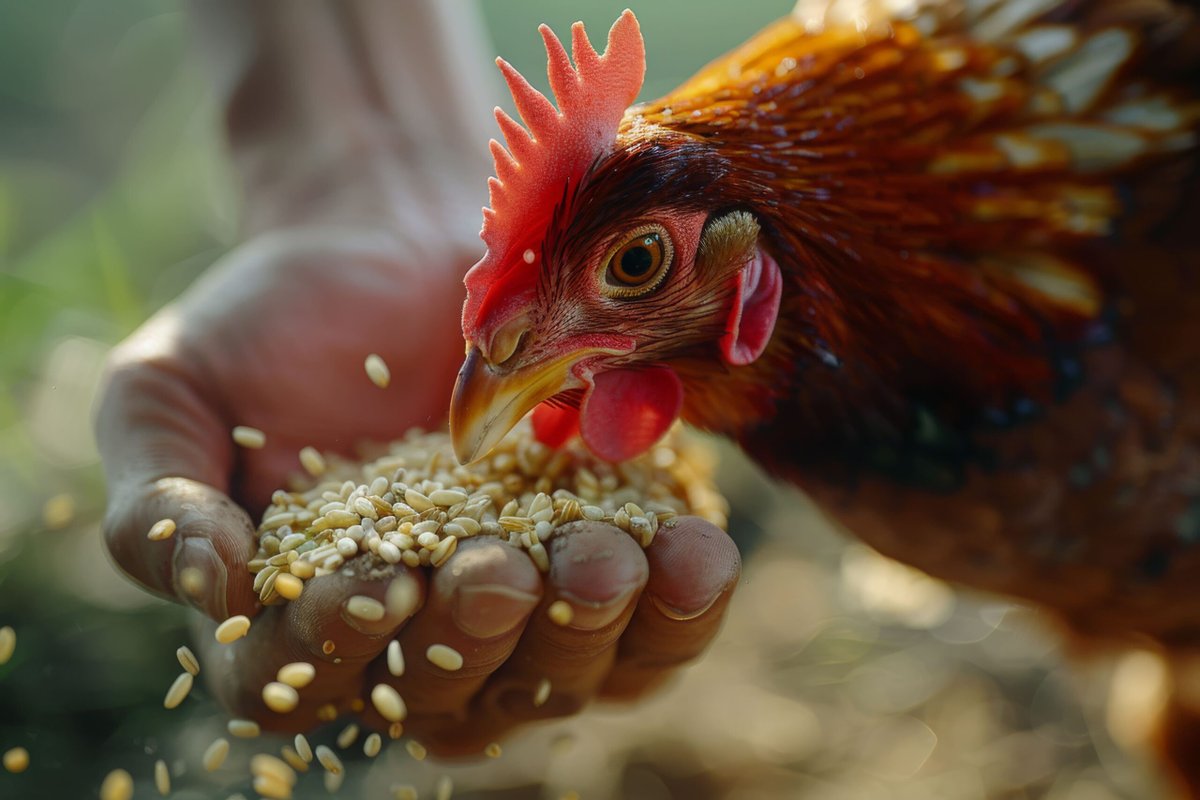The Broilers vs Layers debate is the first major hurdle for every new entrepreneur in Nigeria. This fundamental choice—raising chickens for meat (broilers) or for eggs (layers)—shapes your entire business, from your initial investment to your daily routine and how you make money. Think of it this way: Broiler farming is a sprint for quick cash; layer farming is a marathon for steady income. This ultimate 2025 guide will provide a detailed financial breakdown of the costs and profits for both, helping you decide which race is right for your goals and budget.
The Nigerian Poultry Sector in Crisis: A Statistical Overview
The Nigerian poultry industry isn’t just a business; it’s a pillar of the national economy. Its struggles and successes have a direct impact on the livelihoods of millions. Consider these sobering statistics that highlight the scale of the crisis:
- 25 million jobs are at risk if the industry collapses.
- The sector is home to 180 million birds, a population that dwarfs every other form of livestock in the country.
- 85 million Nigerians are involved in poultry production, either directly or indirectly, underscoring its role as a vital employer.
The Fundamental Difference Between Layers and Broilers
Before we dive into the numbers, it’s crucial to understand that broilers and layers are like two different types of athletes trained for different sports. They are bred for completely different purposes, which affects their appearance, behaviour, and how you manage them.
| Feature | Layers (for Eggs) | Broilers (for Meat) |
|---|---|---|
| Primary Goal | Consistent egg production | Rapid weight gain for meat production |
| Business Model | Long-term, steady daily/weekly income | Short-term, lump-sum profit per batch |
| Time to First Profit | 18-22 weeks | 6-8 weeks |
| Initial Capital | Higher (long feeding period before sales) | Lower (quicker cycle means faster return) |
| Productive Lifespan | 1.5 – 2 years | 6-8 weeks |
| Management Focus | Egg quality, lighting programs, and daily collection | Feed conversion, weight monitoring, and biosecurity |
Physical Appearance and Behaviour
You can often tell the difference just by looking at them.
- Layers: Are typically smaller, leaner, and more active. They have a more upright posture and are very alert. They are bred to be efficient converters of feed into eggs, not muscle.
- Broilers: Are broad, heavy, and less active. They have been bred to grow muscle mass incredibly quickly, so they spend most of their time eating and resting. Their entire focus is on converting feed to meat.
Genetics and Breeding
These differences aren’t accidental. For decades, genetics companies have selectively bred these birds for one purpose. Layer breeds are chosen for the number and quality of eggs they lay, while broiler breeds are selected for their feed conversion ratio (FCR) and speed of growth. This is why you can’t raise a layer for meat profitably, or expect a broiler to lay many eggs.
In summary, while both are chickens, they are specialized tools for different jobs. Understanding this core difference is the first step, but now let’s look at another critical decision that impacts your costs and daily work: how you will house them.
Housing and Space: Deep Litter vs. Battery Cage System
Your choice of housing directly impacts your startup cost, labour, and bird welfare. In Nigeria, the two most popular systems are the deep litter system and the battery cage system.
Deep Litter System
This involves raising birds on a concrete floor covered with a thick layer of bedding material like wood shavings.
- Best For: Broilers. It’s also used by small-scale layer farmers who can’t afford cages.
- Advantages: Lower initial cost, more natural for the birds as they can move freely, and the manure can be easily gathered and sold.
- Disadvantages: Higher risk of disease from contact with droppings, eggs can get dirty or broken, and it can be harder to spot sick birds. A regular chicken health check is crucial in this system.
- Space Requirement: Broilers need about 1.5 square feet per bird. So, 500 broilers would need a pen of about 750 square feet. To learn more about calculating this, see our guide on how big a chicken coop should be.
Battery Cage System
This system houses birds in cages, usually made of wire, arranged in rows and tiers.
- Best For: Layers. This is the industry standard for commercial egg production.
- Advantages: Cleaner eggs, easier to spot sick or unproductive birds, lower risk of disease spread through droppings, and higher bird density in a smaller space.
- Disadvantages: Very high initial investment cost, birds have restricted movement which can be a welfare concern, and requires a well-ventilated structure.
- Space Requirement: A standard cage unit can house 90-120 birds. For 500 layers, you would need about 5-6 of these units, which can fit into a much smaller building than a deep litter system for the same number of birds.
Ultimately, your budget and the type of bird you choose will likely decide your housing system. Once your birds are housed correctly, your next focus becomes the single biggest expense and the key to your success: feed and healthcare.
A Practical Guide to Feeding and Health Management
Your profitability is directly tied to how well you can convert feed into meat or eggs while keeping your flock healthy.
Understanding the Feeding Stages
You cannot feed a single type of feed throughout the birds’ lives. Each stage has specific nutritional needs.
- For Broilers:
- Starter Mash (0-3 weeks): High in protein (about 23%) to support rapid initial growth.
- Finisher Mash (4-8 weeks): Slightly lower in protein but higher in energy to fatten the birds up for market.
- For Layers:
- Chick Mash (0-8 weeks): A starter feed rich in protein for healthy chick development.
- Grower Mash (9-18 weeks): A balanced diet to support skeletal and organ development before they start laying.
- Layer Mash (19 weeks onwards): Contains lower protein but is very high in calcium (around 4%) which is essential for forming strong eggshells daily. Our ultimate guide to calcium for chickens explains why this is so important.
Essential Vaccination Schedule
In Nigeria, certain poultry diseases are common and can wipe out your flock. Vaccination is not optional; it’s essential insurance. If you are ever unsure about a sick bird, it’s important to know when to call the vet for a backyard chicken, as the same principles apply to a commercial farm.
- Day 1: Marek’s Disease (usually given at the hatchery).
- Day 7: Newcastle Disease (Lasota strain) – via eye drop or drinking water.
- Day 14: Infectious Bursal Disease (IBD) or “Gumboro” – first dose.
- Day 21: Lasota revaccination.
- Day 28: Gumboro – second dose.
- Before point-of-lay (for Layers): Fowl Pox and Fowl Cholera vaccinations are crucial.
To put it simply, getting feeding and healthcare right is non-negotiable for profit. With a healthy, well-fed flock, your next challenge is turning those birds or their eggs into cash. Let’s break down the money.
The Financial Showdown: A Detailed Profitability Analysis
This is the most important part of your decision. Here, we break down the real costs and potential profits for starting with 500 birds in Nigeria, using realistic 2025 figures in Nigerian Naira (₦). To provide a direct, apples-to-apples comparison, we will analyze the potential profit from a 500-bird operation for both business models, using realistic 2025 market figures.
Broiler Profitability: The 8-Week Sprint (500 Birds)
The broiler business model is built on speed. You raise a batch of birds, sell them all at once, and then start the next cycle. Here’s a look at the potential profit from one cycle, based on a realistic ₦15,000 price point for a standard 3-3.5kg bird.
| Item | Cost / Revenue (₦) | Calculation |
|---|---|---|
| Total Revenue (Direct Sale) | ₦7,125,000 | 475 birds (assuming 5% mortality) x ₦15,000 per bird |
| Total Expenses | (₦4,600,000) | |
| * Day-Old Chicks (500): ~₦900,000 | ||
| * Feed (approx. 120 bags): ~₦3,500,000 | ||
| * Vaccines, Meds & Biosecurity: ~₦100,000 | ||
| * Labour, Utilities & Misc.: ~₦100,000 | ||
| Net Profit (Direct Sale Model) | ~₦2,525,000 | 475 birds x ₦5,315 profit per bird |
| Net Profit (Processor Model) | ~₦95,000 | 475 birds x ₦200 profit per bird |
Key Takeaway: While the potential profit on paper appears substantial at ₦5,315 per bird, this is only achievable if you can sell directly to consumers in a premium market like Lagos at the peak price of ₦15,000. For the average farmer selling to processors, the reality is a profit margin closer to the ₦200 per bird figure, as market forces prevent them from capturing this high retail price.
Maximizing Your Broiler Profitability
- Master Your Feed Conversion Ratio (FCR): This is the key metric. It measures how much feed it takes to produce 1kg of meat. A good FCR (around 1.8) means lower feed costs and higher profits. Prevent feed wastage and use high-quality feed.
- Minimize Mortality: Keep your birds alive. This requires excellent biosecurity (foot dips, clean water), proper heating in the first two weeks (brooding), and sticking to a vaccination schedule.
- Know Your Market: Time your cycles to end during peak demand seasons like Christmas, Easter, and Sallah when you can sell at the highest price.
Layer Profitability: The 18-Month Marathon (500 Birds)
Layer farming requires patience and significant startup capital. You have to spend a lot of money on birds and feed for nearly six months before you see your first Naira in revenue.
Part 1: The Initial Investment (Before First Egg)
- Point of Lay (POL) Birds (500 birds): ~₦2,000,000
- Housing & Equipment (Cages, Feeders, Drinkers): ~₦1,000,000
- Feed & Care for first 5 months: ~₦500,000 – ₦1,000,000
- Total Initial Investment: ~₦3,500,000 – ₦4,000,000
Part 2: The Monthly Profit (Once Laying)
A common question is, “How many eggs can 100 layers lay in a day?” At a good production rate of 85%, 100 layers will produce about 85 eggs per day. For our 500-bird farm, this translates to roughly 425 crates per month.
| Item | Monthly Cost / Revenue (₦) |
|---|---|
| Monthly Revenue | ~₦2,337,500 |
| Calculation | 425 crates x ₦5,500/crate |
| Monthly Expenses | (~₦2,245,000) |
| Feed | ~₦1,945,000 |
| Meds, Labour & Others | ~₦300,000 |
| Net Monthly Profit | ~₦92,500 |
The Crucial Reality Check: While the monthly revenue is high, the cost of feed at ₦27,800 per 25kg bag has compressed profit margins significantly. It will take many months of laying just to pay back your initial investment, and the profit margin is now minimal.
Revenue Streams Beyond Egg Sales
- Poultry Manure: Dried poultry manure is a highly sought-after organic fertilizer. Bag it and sell it for an extra income stream.
- Spent Layers: At the end of their cycle, the hens are sold. Selling 450-475 birds can still bring in a final lump sum of ₦500,000 or more.
The numbers tell a clear story: broilers are a game of volume and speed, while layers are a game of patience and long-term cash flow. But making a profit isn’t just about raising the birds; it’s about selling them effectively.
2025 Market Prices: Broilers, Eggs, and Feed
Understanding the current, highly volatile market is essential for setting your business plan.
Broiler Chicken Pricing by Weight & Region
Broiler prices vary significantly based on their weight, age, and location. The single ₦24,000 price point, which was common in December 2024, now only applies to premium, extra-heavy birds. Here’s a more detailed breakdown for September 2025.
Lagos Broiler Pricing (Highest in Nigeria)
Lagos prices are typically 20-30% higher than other states due to higher demand from hotels, restaurants, and urban consumers, as well as transportation costs.
- Standard Market Broilers (6-8 weeks):
- 2-2.5kg bird: ₦11,000-₦12,000
- 3-3.5kg bird: ₦14,000-₦16,000
- 4kg bird: ₦18,000-₦20,000
- Premium/Festival Birds:
- 4-5kg birds: ₦20,000-₦25,000
- 5kg+ special orders: ₦25,000-₦30,000
Regional Broiler Pricing (Excluding Lagos)
- Southwest (Ibadan/Oyo State):
- This is Nigeria’s poultry capital and prices here often set the baseline for other regions.
- Mature broilers are generally 5-10% lower than Lagos prices.
- Northern States:
- Typically 15-20% lower than Southwest prices.
- Feed can be cheaper due to proximity to grain-producing areas, but security challenges affect supply consistency.
- Southeast/South-South:
- Similar to Lagos prices due to urban centers and transportation costs from Southwest hatcheries.
Egg Prices (per Crate)
The price for a crate of 30 eggs in Lagos can range from ₦5,400 to ₦7,000. Factors like transportation costs and local market competition heavily influence these prices. It’s important to note that wholesalers and retailers have different price points, and buying in bulk can be more cost-effective.
Feed Costs
Feed is the single largest expense, and its cost has skyrocketed. As of 2025, a 25kg bag of feed can cost around ₦27,800, making feed cost management the most critical component of your business.
The Feed Crisis: A Deeper Look
According to global observers like the Food and Agriculture Organization, the poultry industry is facing a crisis of “imminent collapse” with sobering statistics: 30% of poultry farms closed in the first half of 2024, and 40-45% of farmers have exited the business entirely. A major reason for this is a hidden enemy: the processors who are dictating prices.
How Processors Control the Market
The major processors, who also own the largest feed mills, get preferential treatment. They receive 2-4% rebates on feed purchases for themselves and their contracted farms. For a single truck of feed worth ₦16 million, this rebate amounts to a savings of ₦300,000.
This creates a two-tier market where independent farmers cannot compete. Processors buy feed at a reduced rate and then either use it for their own farms or resell it to their contracted farmers. Meanwhile, independent farmers are forced to buy the same feed at the full retail price, putting them at a significant disadvantage from the start.
The Consequences for Independent Farmers
This system gives processors a firm grip on the market, as they also control the slaughtering and distribution channels. This gives them the power to prevent farmers from adjusting their prices despite their own rising costs. The result is that farmers are left with razor-thin margins, earning as little as ₦200 per bird, a figure that represents the painful reality of a market they no longer control.
Specific Causes of the Feed Crisis
The soaring cost of feed is not a simple problem; it’s a complex crisis rooted in several factors:
- Insecurity in Northern Nigeria: Bandit attacks on maize farms in Northern Nigeria have severely disrupted local production, reducing the supply of a critical feed ingredient. The violence has been particularly devastating, with 1,356 farmers killed between 2020-2024 in the region alone. In some cases, farmers have had to pay up to ₦100,000 just to access their farms.
- Import Challenges: Government officials claimed to have secured 100,000 metric tonnes of maize imports from Argentina to stabilize prices. However, official trade data shows that Nigeria imported only $631.11 thousand worth of maize from Argentina in 2023, highlighting a significant gap between public claims and reality.
- Conflict: The long-standing farmer-herder conflicts have further reduced agricultural output by making it unsafe for farmers to work their land.
- Inflation: Between January and May 2024, the price of maize surged by 60% while soybean prices were up 51%, crippling farmers’ ability to afford feed.
- Currency Instability: The import dependency for vitamins and additives, combined with the instability of the Naira, makes essential micro-ingredients prohibitively expensive.
Government Intervention: What the Industry Demands
The Poultry Association of Nigeria (PAN) has been vocal in demanding specific actions from the government to prevent the collapse of the industry:
- Direct Imports: A request for direct maize imports to allow farmers to bypass middlemen and the cartels controlling the supply chain.
- Preferential Forex: The industry is seeking preferential foreign exchange rates for the import of feed additives, which are not produced locally.
- Subsidies and Regulation: Demands for direct subsidies or pricing regulations to stabilize the cost of critical feed ingredients.
- Local Production: A call for investment in the local production of enzymes and vitamins to reduce import dependency and strengthen the domestic supply chain.
- Local Government Responses: In Niger State, the government’s response to the crisis was to launch a ₦2 million poultry farm project, a sum that has been criticized as insufficient to address the systemic challenges facing the industry in the region.
Crisis Response Strategies: Navigating an Imminent Collapse
In a market where traditional profits are disappearing, adopting new strategies for survival is non-negotiable. Smart farmers are finding ways to monetize every part of their operation and take control of their business.
- Forming Cooperatives for Bulk Purchasing: The most effective way to combat rising feed costs is to buy together. By forming a cooperative with other local farmers, you can leverage bulk purchasing power to secure better prices directly from millers and bypass the costly processor-controlled distribution network.
- Direct-to-Consumer Sales: Bypassing the processors is key to reclaiming your profit margins. Sell your products directly to individual customers at your farm gate, in local markets, or through digital channels like social media and WhatsApp groups.
- Monetizing Every By-Product: The waste from your farm is a valuable resource.
- Selling Used Feed Sacks: Don’t throw them away. Used feed sacks are in high demand for a variety of uses and can be sold for approximately ₦1,500 per dozen.
- Poultry Litter: The manure from your farm is a powerful organic fertilizer. Bagged poultry litter is highly sought after by local farmers and gardeners, and a single bag can fetch between ₦2,000 and ₦2,500.
- Integration with Vegetable Farming: This is a powerful synergy that creates a stable new revenue stream. By using your own poultry manure as fertilizer, you can grow high-value crops like fluted pumpkin (ugu), vegetables, or maize.
- Mastering Market Timing: In the broiler business, timing is everything. Plan your cycles to end during periods of peak demand, such as Christmas, Easter, and Sallah, when you can secure the highest prices for your birds.
The Downsides: Disadvantages of Layers and Broilers
No business is without its challenges. Being aware of the disadvantages helps you plan better and avoid surprises.
The Challenges of Broiler Farming
- High Labour Intensity: The 6-8 weeks are intense. The first two weeks require near 24/7 monitoring.
- Market Timing is Critical: Your profit depends heavily on selling during peak demand. A miscalculation can lead to losses.
- High Disease Risk: An outbreak of diseases like Gumboro or Newcastle can wipe out your entire investment. Knowing how to spot and treat common chicken respiratory infections early is a critical skill.
- Cash Flow Pressure: All your money is tied up until you sell. If a buyer disappoints you, you are stuck feeding big birds that are losing you money daily.
The Disadvantages of Layer Farming
- High Initial Capital: This is the biggest barrier. You need a lot of money upfront with no income for almost 6 months.
- Long-Term Commitment: It’s a daily job for at least two years. You can’t easily take a break.
- Price Volatility: The market price of eggs can fluctuate. A sudden drop can significantly affect your income.
- The “Spent Layer” Problem: At the end of their cycle, the hens are sold. The productive lifespan of a chicken varies, but for commercial layers, it’s typically around 18-24 months.
Understanding these risks is crucial for building a resilient business. One of the biggest risks beginners take is trying to combine both models improperly, which leads to our next critical point.
Can Broilers and Layers Be Raised Together? The Definitive Answer
This is one of the most common questions, and the answer is a clear and firm No. It might seem like a good idea to save space, but it’s one of the fastest ways to fail in poultry farming. Imagine trying to feed a heavyweight boxer and a marathon runner the exact same diet—it would be a disaster for both. Here’s why:
- Different Feed Requirements: Layers need calcium for shells; broilers need high protein for muscle.
- Different Lighting Programs: Layers need 14-16 hours of light to lay. This will stress broilers.
- Disease Transmission: Older layers can carry diseases that are fatal to young broiler chicks.
- Bullying and Aggression: Layers establish a “pecking order” and can injure or kill the more docile broilers.
So, keep them separate. This discipline will pay off. Now, let’s translate all this information into a structured business plan.
Business Plan Essentials: Broilers vs Layers
Your business plan is your roadmap. For the Broilers vs Layers decision, the financial metrics you need to focus on are completely different for each model.
Key Metrics for Your Broiler Business Plan
- Cost per bird: How much it costs you to raise one broiler to market weight.
- Feed Conversion Ratio (FCR): Your most important number. Aim for 1.8-2.0.
- Mortality Rate: Track this closely. Aim for below 5%.
- Profit per Batch & ROI: The final calculation of your success for that cycle.
Key Metrics for Your Layer Business Plan
- Cost to Point-of-Lay (POL): How much it costs to raise one bird until it lays its first egg.
- Hen-Day Production %: The percentage of your flock that lays an egg each day. Aim for 85% or higher at peak.
- Cost per Crate of Eggs: How much it costs you to produce one crate of eggs.
- Break-Even Point: The month when your total egg sales finally cover your initial investment.
Tracking these numbers will tell you if your business is healthy or not. To get the best numbers, you need to start with the best birds.
Examples of Broiler and Layer Breeds in Nigeria
Choosing the right breed is critical for success. Here are some of the top-performing breeds available in Nigeria.
Top Broiler Breeds (for Meat):
- Cobb 500: Famous worldwide for having the best feed conversion ratio (FCR).
- Ross 308: A very hardy bird that is resilient and grows uniformly, making it a great choice for beginners.
- Arbor Acres: Known for its excellent meat yield, especially in the breast area.
Top Layer Breeds (for Eggs):
- ISA Brown: The most popular choice in Nigeria and the industry standard. A prolific, reliable layer.
- Lohmann Brown: A very robust and adaptable hen that performs well even in the hotter regions of Nigeria.
- Bovan Nera: A hardy black hen with a calm temperament and very good egg production numbers.
With the right breed and a solid plan, you are ready to make your final decision. Let’s bring it all together.
The Final Verdict: Which Poultry Business Should You Choose?
Now that you have all the data on Broilers vs Layers, the final choice comes down to your personal financial situation, your goals, and your temperament.. Ask yourself these questions:
- Consider Broilers if you answer ‘Yes’ to these:
- Is my starting capital less than ₦3 million?
- Do I need to see a profit within the next 3 months?
- Am I prepared for a very intense 8 weeks of work, followed by a break?
- Do I have a strong plan to sell my birds during holidays and festivals?
- Consider Layers if you answer ‘Yes’ to these:
- Is my starting capital above ₦3.5 million?
- Can I financially survive for at least 6-8 months with no income from my farm?
- Do I prefer a stable, predictable daily routine for the long term?
- Is my primary goal to build a long-term agribusiness with consistent cash flow?
Once you’ve made your choice, you can dive into our detailed guide on starting a broiler farm or our complete guide to starting a layer farm.
Frequently Asked Questions (FAQs)
1. What is the biggest mistake a beginner can make?
The biggest mistake is often starting too big without enough experience. It’s better to start with a smaller flock (e.g., 100 birds) to learn the ropes and understand the local market dynamics before scaling up to 500 or more.
2. Where can I buy day-old chicks or Point of Lay birds in Nigeria?
You can purchase them from reputable hatcheries and breeders across Nigeria. Some well-known names include Chi, Amo, Zartech, and Obasanjo Farms. It is crucial to buy from a trusted source to ensure the health and quality of your birds.
3. What is the typical mortality rate I should expect?
A mortality rate of 5-8% is common, especially in the first few weeks for chicks. Good management, proper brooding, and a strict vaccination schedule can help you keep it below 5%. Higher mortality rates will significantly reduce your profits.
4. How can I manage the rising cost of feed?
Feed costs are a major challenge. You can manage this by minimizing wastage, ensuring proper storage to prevent spoilage, and exploring alternative feed sources. Buying in bulk can also help you get a discount.
5. Do I need a veterinarian on standby?
While you don’t need a vet on call 24/7, it’s essential to have a relationship with a qualified poultry vet. They can help you with vaccination schedules, diagnose disease outbreaks, and provide expert advice that can save your entire flock.
Conclusion – A Final Word on the 2025 Market Reality
The Nigerian poultry industry in September 2025 is experiencing its worst crisis in years. With 30% of farms already closed and the industry on the brink of collapse, this is no longer about choosing between quick profits (broilers) or steady income (layers)—it’s about survival. While the updated pricing data shows a potential for significant profit in a single broiler cycle, success now hinges on your ability to capture the ₦5,315/bird profit of a direct seller, rather than settling for the ₦200/bird margin offered by the processor-controlled market. Only well-capitalized, highly efficient operators with multiple revenue streams can hope to survive until market conditions improve.

Oladepo Babatunde is the founder of ChickenStarter.com. He is a backyard chicken keeper and educator who specializes in helping beginners raise healthy flocks, particularly in warm climates. His expertise comes from years of hands-on experience building coops, treating common chicken ailments, and solving flock management issues. His own happy hens are a testament to his methods, laying 25-30 eggs weekly.



